CLYDEBANK PUBLIC LIBRARY, Dumbarton Road, Clydebank, G81 1XH.
ACCESS : Stairs up from the pavement. Check opening times. https://www.west-dunbarton.gov.uk/libraries/library-branches/clydebank-library/
Listed B
As from mid-2025 a new Museum, Local History and Archives has been opened in the basement. This largely supercedes the museum and gallery facilities within the CLYDEBANK TOWN HALL, DUMBARTON ROAD, CLYDEBANK
This is a solid mass of an ediface right on Dumbarton Road. Yet it has the dignity appropirate to such an establishment of literature. The mass is given lightness through raising the main floor above street level. That main floor and a second one rise up between classical looking pilasters; the building's corners heavily quoined; the roof hidden behind a heavy entablature and parapet.
A basement level is almost hidden, but behind a lower pavement edge wall. It is within this basement that you may also find some interest in the collections or displays.
When it was designed, the process of entering, of rising up into the building was much more important than ease. As one rises up those entrance stairs we are greeted by a vaulted arch and grand stone carving.
The ArchitectureGlasgow website tells us that it was purpose built lin the early 20th century. It was was partly funded by the Scottish-born American philanthropist, Andrew Carnegie. The architect was A. McInnes. It opened in 1913.
When World War II broke out there was much hesitation in organising civil defence preparations. The United Kingdom was not yet officially at war with Germany and it appears that many felt this would make the country appear that it would be. Perhaps there was also simply an attitude of uncooperation with central government - on principle. Yet it was already very obvious that the big industrial centres were prime targets, Clydebank being that of ship building with the enormous Singer Sewing Machine premises potentially able to adapt to defence produciton too.
At last the local Council fell in line with central government, in part due to an increasing realisation of the situation and in part due to the pressures of central authority and local civil servants. Some Air Raid Precautions (ARP) had been st in motion although these were very basic at the outset.
Whern instructed to set up a proper Central Control Centre, the obvious reation was to select a site on the periphery of the town away from the industries that would attract bombers. This was overuled in favour of a central location that could better coorinate fire watching and response, rescue etc. The library, this building was selected. For one thing, the basement rooms were of just the right dimensions fand specifications for a control centre layout as stipulated in the circular on Control Centres.
As it happened, the Libary (as well as the Town Clerk's Office) received a direct hit in the night of the first rail and the Control Centre became a shamble. fortunately without fatal casualties. [MacPhail]. But it went on to coordinate the ARP for the rest of the war.
Clydebank Museum, Local History and Archives
The Clydebank Museum, Local History and Archives opened in July 2025 and is situated in the basement floor of Clydebank Library. The facility underwent a major redevelopment and comprises a dedicated Museum telling the story of Clydebank’s past and looking to its future. Examples from the Singer Sewing Machine collection which was awarded the 'Recognised Collection of National Significance' by Museums Galleries Scotland in 2013 are on display alongside objects and painting from the West Dunbartonshire Council collection.
The Local History and Archive service offers a unique collection of information on the history and culture of the Clydebank and the surrounding area. It numerous collections relating to Clydebank including books, maps, pamphlets, photographs, postcards, directories and newspapers. It also provides a broad range of genealogy resources including online access to Ancestry, Newspapers.com and the British Newspaper Archive. [WDC].
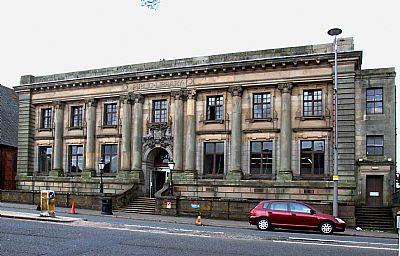
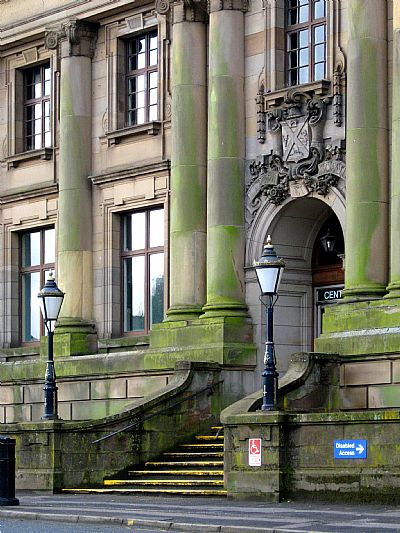
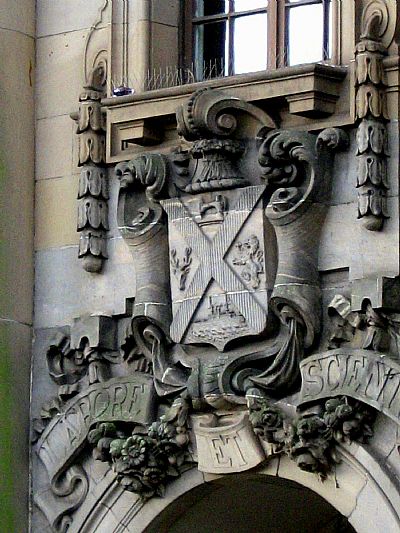
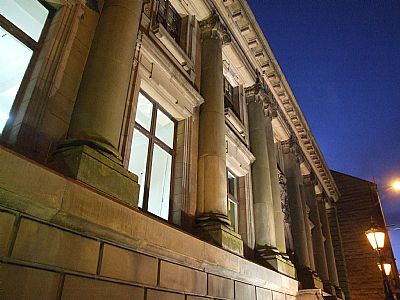
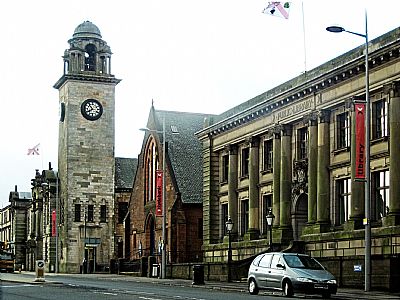
This photo clearly illustrates how buildings work together. They do not have to match, but have something in common.
ARCHITECTURE GLASGOW website : http://www.architectureglasgow.co.uk/oldcity.library.clydebank.html
BRITISH LISTED BUILDINGS with map : https://britishlistedbuildings.co.uk/200358726-clydebank-public-library-dumbarton-road-clydebank-clydebank#.X-YZkXpxdPY
MACPHAIL I.M.M : The Clydebank Blitz. 1974. Clydebank District Libraries and Museums Department. Reprinted by Cordfall Ltd, Glasgow. ISBN. 0 85279 0619.
WEST DUNBARTONSHIRE COUNCIL website :
https://www.west-dunbarton.gov.uk/libraries/library-branches/clydebank-library/
WEST DUNBARTONSHIRE HERITAGE TRAIL : CLYDEBANK : https://www.west-dunbarton.gov.uk/media/2619058/clydebank.pdf

